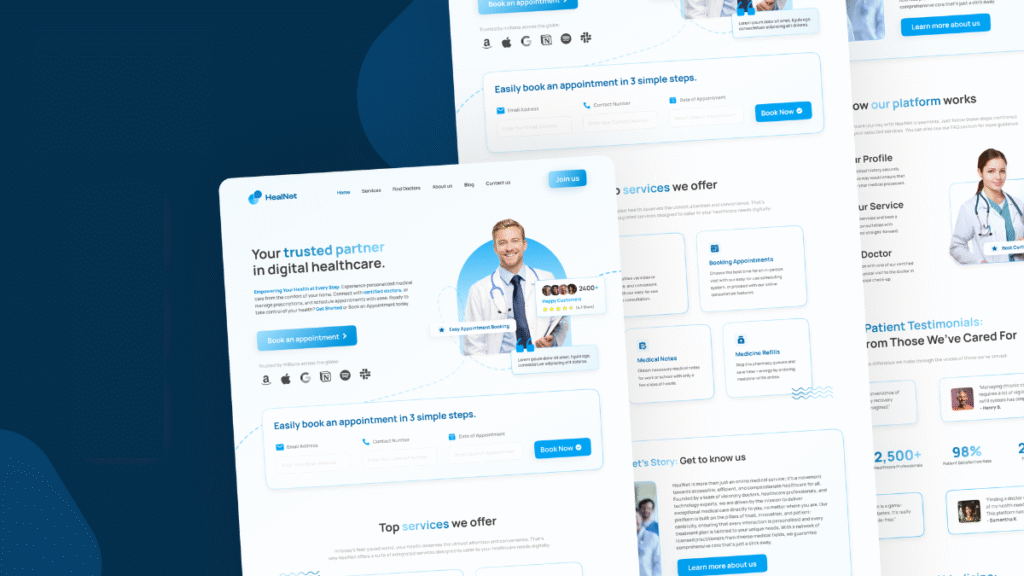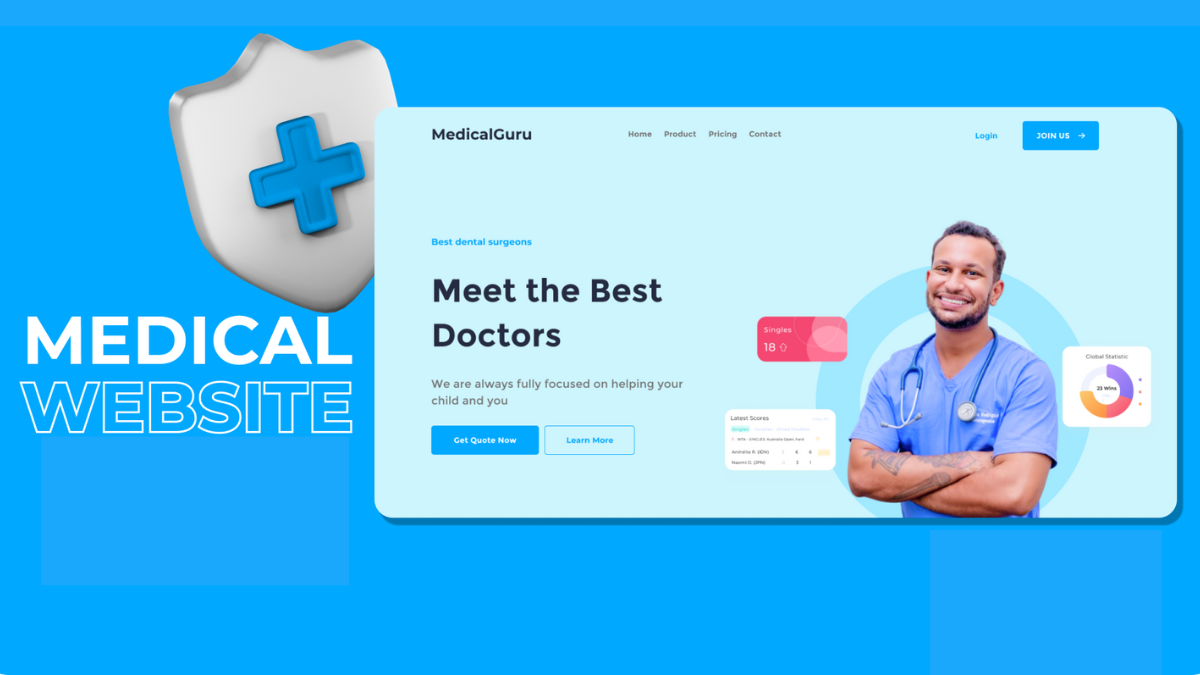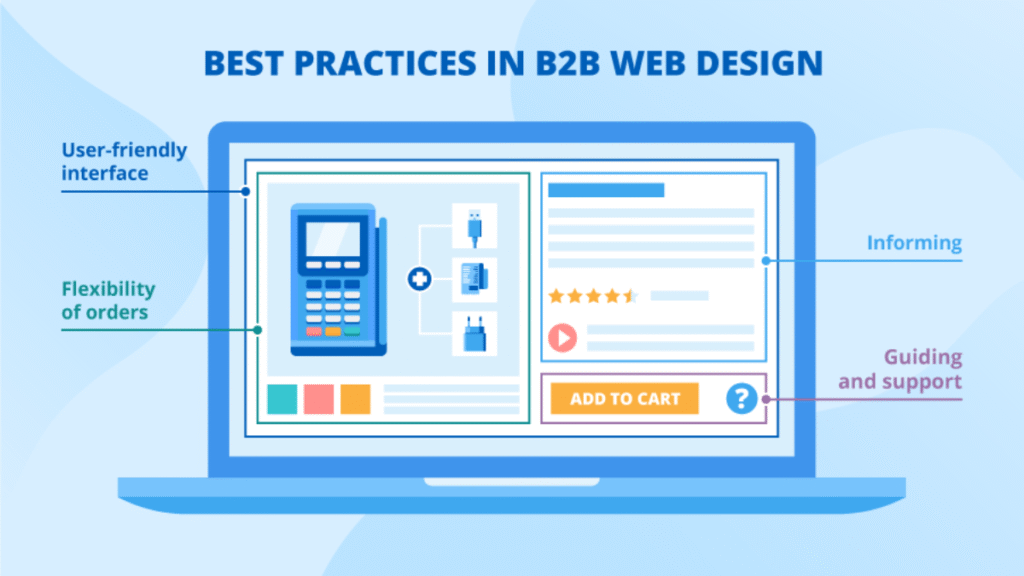Introduction: Why Medical Website Design Matters
In today’s digital-first world, your medical practice’s website is often the first point of contact for potential patients. A well-structured medical website not only represents your brand but also builds trust, improves patient engagement, and ensures compliance with strict healthcare privacy standards.
Whether you are a solo practitioner, a multi-specialty clinic, or a large hospital network, investing in professional medical website design is essential for growth. Beyond aesthetics, a successful healthcare website requires data security features, responsive design, accessibility standards, and website optimization for search engines.
This article will walk you through everything you need to know about designing and developing an effective medical website that is secure, user-friendly, and optimized for patient acquisition.
What Is Medical Website Design?
Medical website design refers to the process of creating and developing websites specifically for healthcare providers such as doctors, dentists, clinics, hospitals, and wellness centers. Unlike generic websites, medical sites must:
- Adhere to healthcare privacy compliance regulations for protecting patient information.
- Offer a user-friendly patient experience with easy navigation and appointment booking.
- Be responsive and mobile-friendly, as most patients search for healthcare services on smartphones.
- Implement website optimization strategies to rank higher on Google and attract local patients.
- Provide educational content to build credibility and answer patient questions.
Key Features of a Successful Medical Website
When it comes to healthcare web development, functionality is just as important as appearance. Below are the must-have features of a professional medical website design:
1. Data Security & Privacy Compliance
- SSL certificates and encryption protocols.
- Secure patient forms for online scheduling and inquiries.
- Protected messaging platforms for doctor-patient communication.
2. Responsive Design
- Mobile-first layouts that adapt to all screen sizes.
- Fast loading speeds for better user experience and SEO.
- Clear navigation menus for effortless browsing.
3. Professional Branding & Visuals
- Use of calming colors and clean layouts.
- Professional photography of the clinic and staff.
- A consistent visual identity to build patient trust.
4. Patient-Centered Features
- Online appointment booking systems.
- Telemedicine integration for virtual consultations.
- Patient portals for accessing medical records securely.
5. SEO & Website Optimization
- Local SEO targeting (e.g., “dentist in New York”).
- Optimized meta tags, alt texts, and structured data.
- Educational blogs to answer patient queries and boost authority.
6. Accessibility Standards (ADA Compliance)
- Text-to-speech and screen-reader compatibility.
- Color contrast for visually impaired users.
- Easy-to-read fonts and layouts.

Why Healthcare Privacy Compliance Is Essential
Unlike other industries, healthcare websites deal with sensitive patient data. Failure to meet privacy compliance standards can result in heavy fines and loss of credibility.
Some compliant features include:
- Data encryption for online forms and communications.
- Restricted access controls for medical staff.
- Audit trails to track system access and activity.
By ensuring privacy compliance, you safeguard both your patients’ trust and your clinic’s reputation.
The Role of SEO in Medical Website Development
Even the most beautiful medical website won’t help if patients can’t find it online. That’s where website optimization (SEO) comes in.
SEO Best Practices for Medical Websites:
- Local SEO: Optimize for “near me” searches to attract nearby patients.
- Content Optimization: Create blogs, FAQs, and treatment guides targeting patient queries.
- On-Page SEO: Use focus keywords like medical website design, website development, and website optimization.
- Technical SEO: Ensure fast loading speeds, XML sitemaps, and structured data markup for medical services.
- Reputation Management: Encourage patient reviews on Google and healthcare directories.
Benefits of Professional Medical Website Design
A professionally designed medical website delivers several tangible benefits:
- Increased Patient Acquisition: Optimized websites rank higher on Google, attracting new patients.
- Improved Patient Engagement: Features like appointment booking and chatbots reduce friction.
- Stronger Brand Credibility: A clean, professional site makes your practice look trustworthy.
- 24/7 Availability: Patients can access information, schedule visits, or contact you anytime.
- Reduced Administrative Work: Online forms and portals streamline staff workflows.
Common Mistakes to Avoid in Healthcare Website Development
Many practices fail to leverage the full potential of their websites because of avoidable errors. Some mistakes include:
- Using generic templates that don’t reflect medical professionalism.
- Ignoring patient data privacy compliance, risking security breaches.
- Slow website speeds, which frustrate patients and harm SEO.
- Lack of patient-friendly features such as appointment booking.
- Poor mobile experience, leading to high bounce rates.
Best Practices for Website Optimization in Healthcare
To make your site effective, follow these website optimization strategies:
- Speed Optimization
- Use image compression and content delivery networks (CDNs).
- Reduce unnecessary plugins and scripts.
- Use image compression and content delivery networks (CDNs).
- User Experience (UX) Enhancements
- Keep navigation simple with clear CTAs (“Book Appointment”).
- Use white space to reduce clutter.
- Keep navigation simple with clear CTAs (“Book Appointment”).
- Content Marketing for SEO
- Publish blog posts about treatments, wellness tips, and FAQs.
- Share patient success stories (with consent).
- Publish blog posts about treatments, wellness tips, and FAQs.
- Mobile-First Design
- Prioritize mobile-friendly layouts and touch-friendly buttons.
- Prioritize mobile-friendly layouts and touch-friendly buttons.
Choosing the Right Medical Website Design Company
When selecting a web development partner, look for:
- Experience in healthcare industry projects.
- Knowledge of patient privacy compliance and security standards.
- Proven SEO expertise with case studies.
- Ongoing support & maintenance packages.
- Custom solutions instead of one-size-fits-all templates.
Future Trends in Medical Website Development
The future of medical website design is being shaped by new technologies and patient expectations:
- AI Chatbots for 24/7 patient support.
- Voice Search Optimization for queries like “find a cardiologist near me.”
- Telemedicine Expansion integrated directly into websites.
- Personalized Content tailored to user behavior.
- Interactive Tools like symptom checkers and virtual tours.
Conclusion
Your medical website is more than just a digital brochure—it’s a powerful tool for patient acquisition, engagement, and trust-building. With the right balance of data security, responsive design, website optimization, and SEO strategies, your practice can thrive in the competitive healthcare market.
By avoiding common mistakes and investing in professional web development, you can create a site that not only looks appealing but also meets the highest standards of privacy compliance, accessibility, and performance.
A well-executed medical website design is an investment that pays dividends in patient satisfaction, online visibility, and long-term practice growth.
















